ClarkVision.com
| Home | Galleries | Articles | Reviews | Best Gear | Science | New | About | Contact |
Does Gear Matter in Photography?
by Roger N. Clark
| Home | Galleries | Articles | Reviews | Best Gear | Science | New | About | Contact |
by Roger N. Clark
It is often said by some photographers that gear does not matter, and that it is the photographer that matters. It is true that a photographer with the best gear who does not know how to use that camera, nor understand the artistic nature of lighting composition and subject is unlikely to get good photographs. But can a photographer who knows their gear, knows lighting composition and subject make great photos with any gear? Yes, but not just any kind of photo. In many cases, gear does matter. The key is knowing the photo gear, what it can and can't do, and using the proper gear for the situation. Knowing gear is also important in choosing the right gear, whether at the purchase decision, or at the the scene. Read on for the details.
In the following examples of various photographic situations, I assume the photographer knows lighting, composition and subject, as well as how to use the gear.
Static Subject
Static subject in good light, limited dynamic range, covering a large angle: Gear matters least. A good photographer can make a great image with just about any camera. An example is shown in Figure 1, which was taken on slide film using a consumer zoom lens.
Static subject, high dynamic range, covering a large angle of view: gear matters but a good photographer can overcome almost any gear. For example making a series of exposures and assembling them into a high dynamic range (HDR) image using any camera.
Need for very high resolution, very large prints of a static subject: simple, do a mosaic with pretty much any camera.
Figure 1 shows an example image where many types of cameras could make great images of the scene.
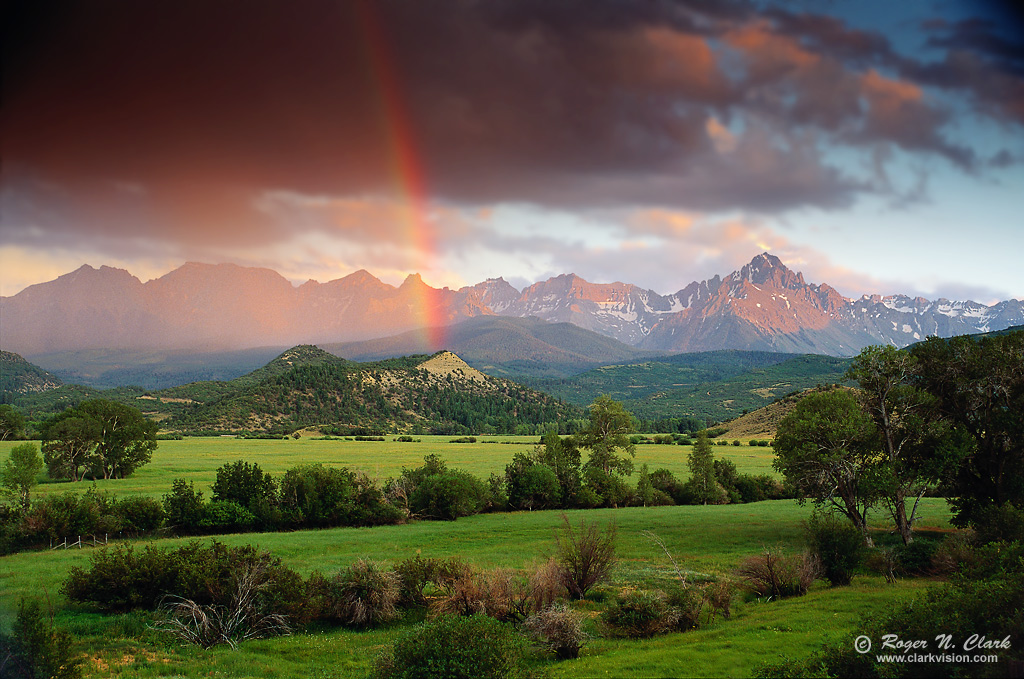
Figure 1. Image made on 35 mm film. The scene
dynamic range is not huge, and a P&S camera could make a
great image in a single frame that would be hard to tell the
difference in this web image. With a mosaic, the P&S camera
could even make a higher resolution image making huge
prints containing finer detail than the film image.
The image has won Best in Show in a national contest.
See gallery image and full details HERE.
Portraits of Relatively Static Subjects
People or animal portraits can be made with a variety of cameras, as long as one has the needed focal length (e.g. a long focal length P&S super zoom camera can get great images of birds sitting in a tree or bush), like that in Figure 2.

The small sensor P&S with the small diameter lenses that do not collect a lot of light still work well enough and collect enough light to make great images in the above situations.
Faster Action, not Moving Toward/Away from the Camera
There are also action situations where a P&S can still get great images. If the action is not moving toward or away from the camera, so the focal distance remains constant, then a P&S camera or even a DSLR with manual focus lenses can make great images, like the two zebras fighting in Figure 3. While a P&S superzoom camera can get similar images, the final image would likely be somewhat noisy due to the fast shutter speeds required. Digital cameras with an APS-C sensor could get similar images with a 300 mm f/4 lens. An excellent outfit for this kind of photography would be a Canon EOS 7D Mark II DSLR Camera with a Canon EF 300mm f/4L IS USM Lens or if the action turns toward you, a Canon EF 300mm f/2.8L IS II USM Lens.
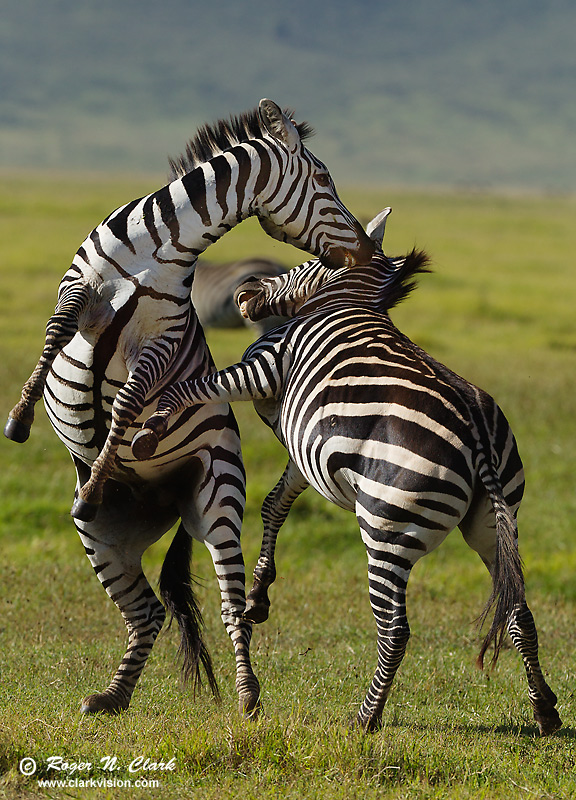
Action Moving Toward/Away from the Camera
Gear matters more as light levels fall, motion speed increases, and as dynamic range and lighting become more difficult..
Photographing people, pets or wildlife moving in low light (e.g. dim room light, Figure 4). Gear matters: one needs phase detect autofocus with large aperture. Most P&S and phone cameras fail at this regardless of photographer experience.
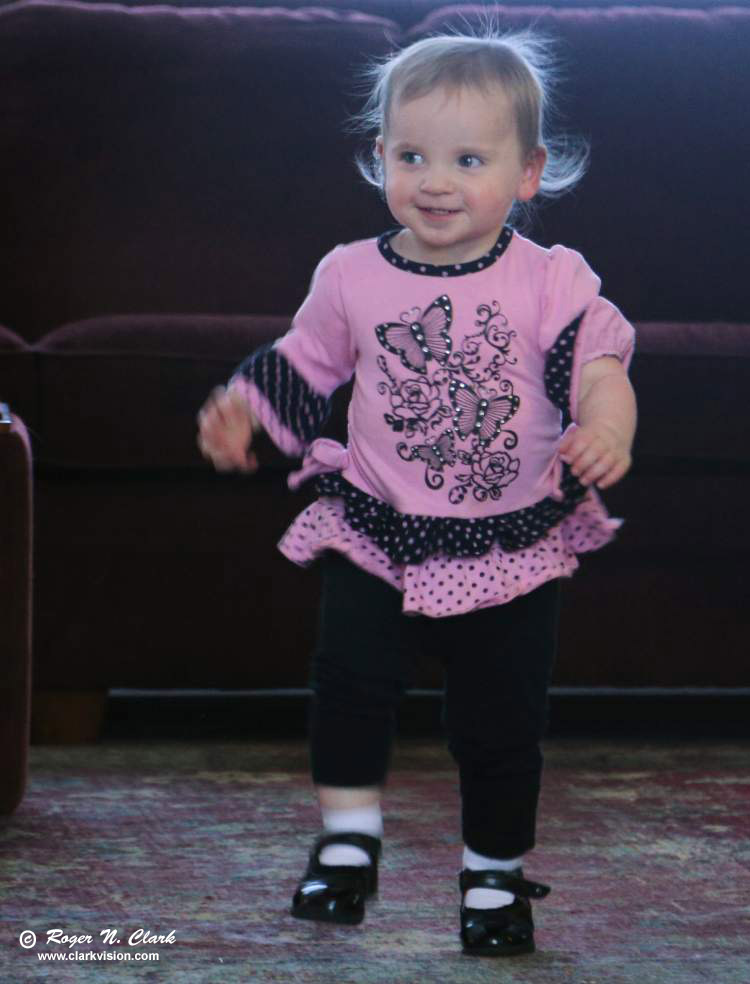
An example of a giraffe in a field at sunrise, a high dynamic range scene, is shown in Figure 5. The giraffe is slowly walking so the exposure time needed to be somewhat short. The high dynamic range from the sun to the grass at the giraffe's feet would be very difficult for a small sensor P&S camera. A prosumer DSLR could make a similar image. Larger sensors with larger pixels generally (but not always) have better dynamic range.
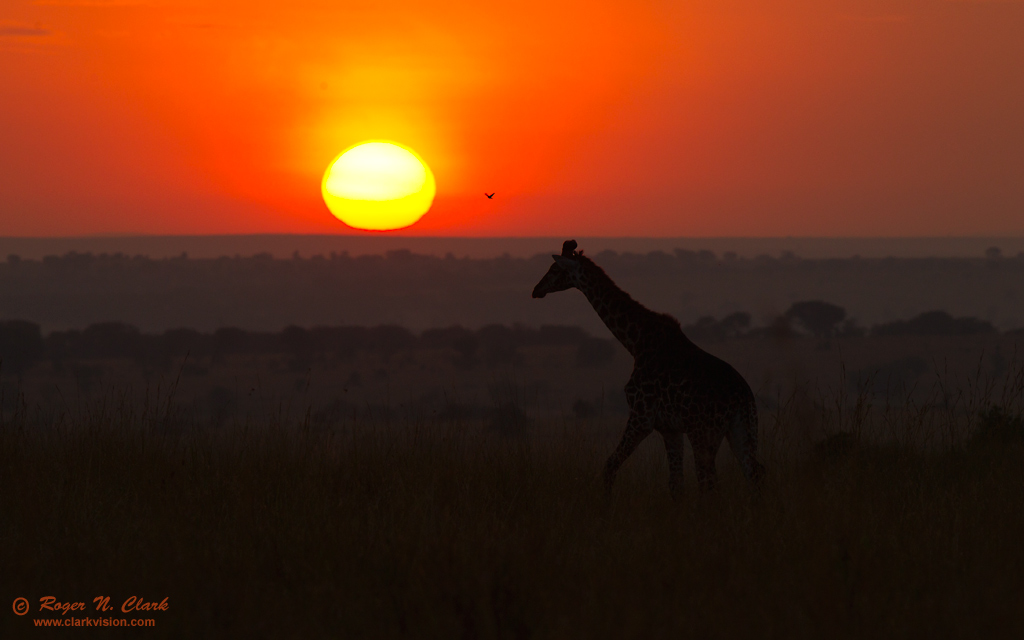
Fast action photography
Fast action photography, including sports, and wildlife requires top gear. If good light, and speeds not too fast, prosumer DSLRs are needed with prosumer lenses can get great images. If the light is dim and/or the action very fast, then even with the top pro gear and best fast lenses can still fall short. In the best light, very fast action can be a challenge for the top gear available (and costing tens of thousands of dollars).
Here is an example image that could be made with a prosumer DSLR and prosumer telephoto lens, but near impossible with a P&S camera: a lion moving through the forest at sunrise: The lion was moving too fast for a P&S camera's autofocus system, but not too fast for a prosumer DSLR. In theory, one could choose a pre-focus spot and wait for the lion to move to that point, then quickly press the shutter at the right time. It is a very low probably event with a P&S or manual focus camera, but is routine for a phase detect autofocus DSLR.
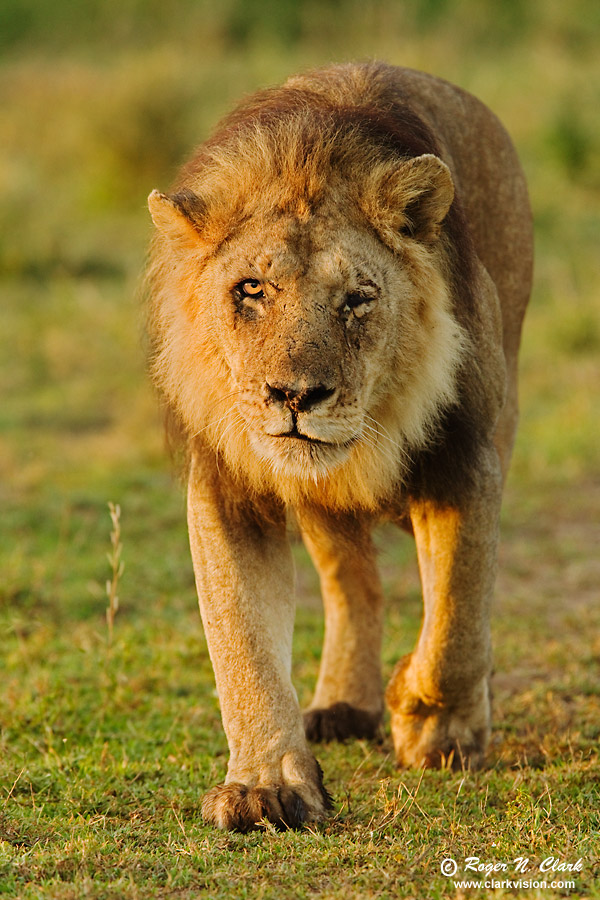
For very fast subjects, like a dog running toward the camera filling the frame (Figure 7), photographing the action is a challenge for top gear. The lens is just as important as the camera body. Lenses with fast autofocus coupled with a body able to drive the lens at its top speed are required.
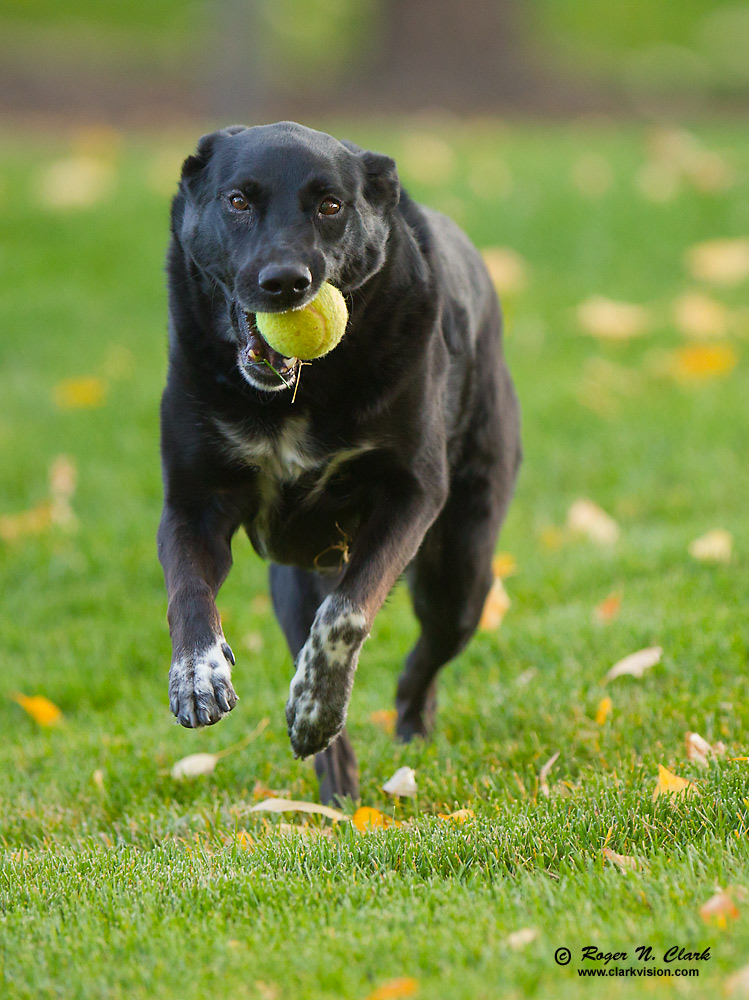
Similarly, fast flying birds will challenge even the fastest cameras with fast autofocusing lenses (Figure 8). The fast Eurasian roller is a very difficult subject. I had tried to get this and similar small fast birds in flight for many years. First I tried pro cameras with a 500 mm f/4 super telephoto. Early pro digital cameras were not up to the challenge. Then I got a canon 1D Mark IV pro digital camera, but the 500 mm lens did not have fast enough autofocus. I switched to a 300 mm f/2.8, which has much faster autofocus then the 500 mm lens, even with a teleconverter in place. The image in Figure 8 was made with a Canon 1D Mark IV with Canon 300 mm f/2.8 and 1.4x teleconverter. Only this combination was fast enough, with enough focal length for me to obtain images of this bird in flight.
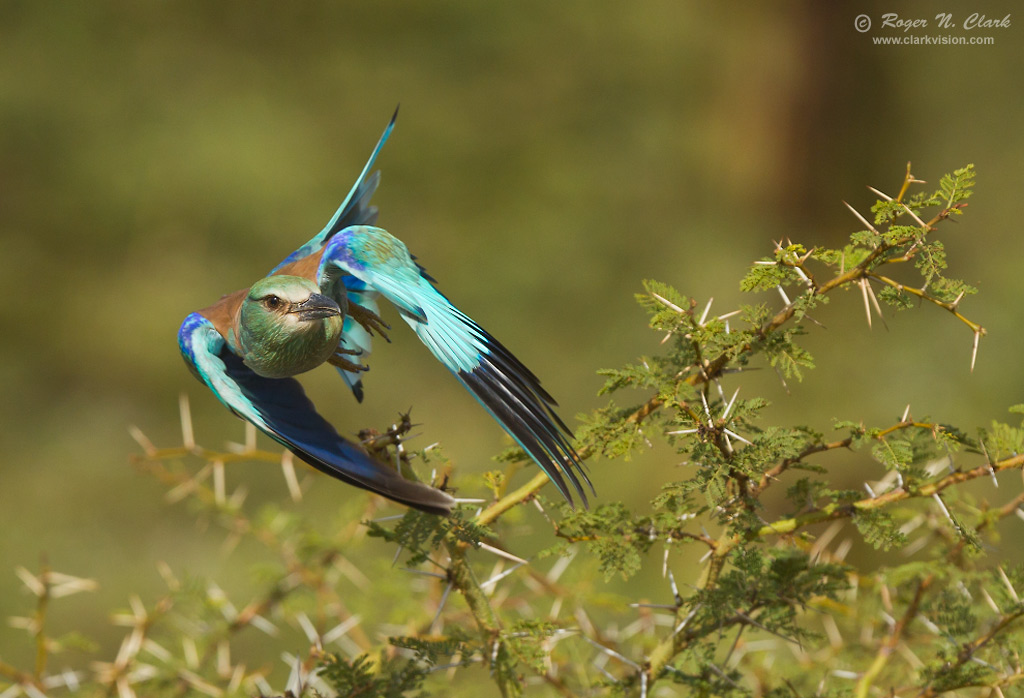
Low Light Photography
As light levels fall, the small lenses of P&S cameras may not collect enough light fast enough to produce a good image. For example, in night photography where one has many seconds to minutes, but where light levels are very low, the P&S cameras can only record a few stars. For example, the nightscape image in Figure 9 is pretty much impossible to obtain even with a prosumer 1.6x crop DSLR (let alone a P&S) camera, if the camera used a wide angle lens (like 15 mm f/2.8). The apertures are simply too small the record all those stars.
The wide angle view is not possible to record all those stars with a full frame DSLR and a wide angle lens like a 10 mm f/2.8 lens. The lens aperture is too small and exposure times would be 50 times longer to get the same stars recorded! The stars would rotate out of view. With a 1.6x crop DSLR, and a Sigma 35mm f/1.4 DG HSM Lens, the scene would be possible to obtain with a mosaic. With a 4x crop P&S camera, an equivalent field of view lens would be about 3 mm in focal length, and at f/2.8 would require exposures over 500 times longer than with the Sigma 35mm f/1.4 DG HSM Lens used to obtain the image in Figure 9. That would mean an exposure of over 4.5 hours to record the same stars, but the stars would rotate out of the sky long before that. The right gear is critical for images like this.
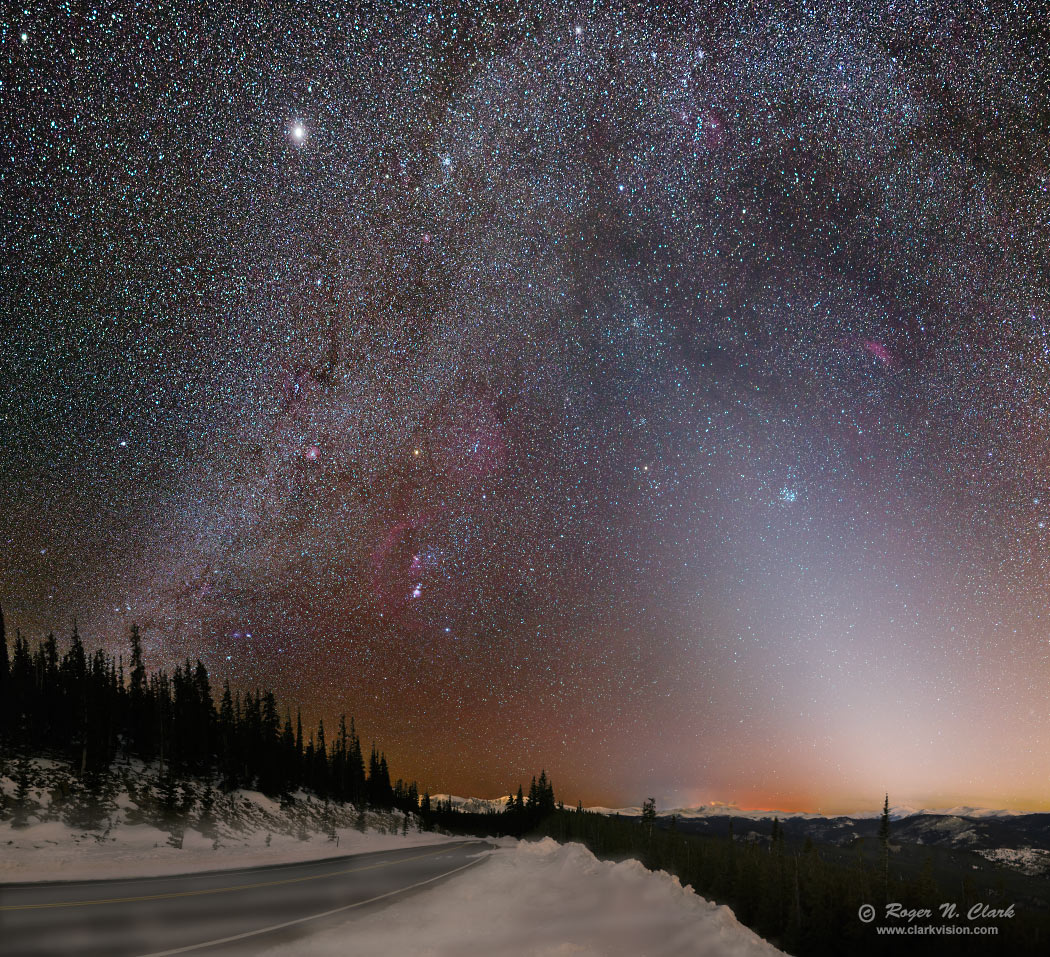
In low light photography, lens choice becomes very important. Contrary to popular belief, sensor size has little to do with a quality low light camera. For example, the Canon 7D DSLR has small pixels and has a reputation for poor low light performance. However, the astrophoto in Figure 10 is of the extremely faint Horsehead nebula in Orion, and the image was made with a Canon 7D. The 7D has great low light performance and when coupled with the correct lens, makes stunning images. The key in any extreme photography is matching the lens with the camera. One needs not only the appropriate camera with the proper setting, but also the best lens for the job. it is the camera plus lens together working as a system that is important.

Discussion
Summary: sometimes gear matters, sometimes it doesn't. When there is plenty of light, without too much dynamic range or movement, many cameras can get great images and gear matters least. But as movement speeds increase, and/or light levels fall, gear does matter. But even with good gear, what also matters is choosing the right gear for the subject, and processing the data correctly. For when gear matters, see my Recommended Cameras and My Gear List for Photography.
Example processing is shown in Figure 11. The Canon 7D has small pixels and a reputation for excessive noise at high ISO while cameras with larger pixels do not have that reputation. But all one needs to do is average the pixels together to give the same pixels on the subject as cameras with larger pixels, and the noise will be improved (compare the middle and right images in Figure 11; the 7D actually produces a better image). In these days of digital cameras, one can also choose parameters in post processing. (Note photoshop does not have the tools to do this--use other programs). For more information, see Exposure and Digital Cameras.
Figure 11 illustrates gear choice and processing choice. Small sensors have the reputation for noisier images. It is actually the lens that controls that, assuming a quality sensor. In fact, sensors in some P&S cameras are what are called back side illuminated and have higher sensitivity than the sensors found in all of today's DSLRs. In Figure 11, we see images of the Moon obtained at ISO 6400 made with the same lens and same exposure time. The 7D image on the left appears quite noisy and some people say use a different sensor with better pixel performance, like the full frame DSLR a Canon 5D Mark II (middle frame). But look, we have lost a lot of detail. We have traded less detail for less noise! Well, one can do that in post processing (right image).

Conclusions
Yes, sometimes gear matters. But there are conditions where gear matters less, and even post processing can influence whether or not gear matters. Sometimes traditional internet perceptions are incorrect as to when and what gear matters. That includes best low light cameras, and best action cameras. In both cases, the lens can have a greater influence on performance than the body. As the photographic situation becomes more extreme, as in low light or action, gear, technique, and post processing all matter.
Other Reading
Wildlife Action Photography: Autofocus Tracking with Digital Cameras
Understanding DSLR Autofocus (Phase Detect Autofocus)
Nightscape Photography with Digital Cameras Exposure and Digital Cameras.
Some comparison small sensor and large sensor camera images.
| Home | Galleries | Articles | Reviews | Best Gear | Science | New | About | Contact |
http://www.clarkvision.com/articles/does.gear.matter
First Published April 20, 2014.
Last updated December 12, 2014.